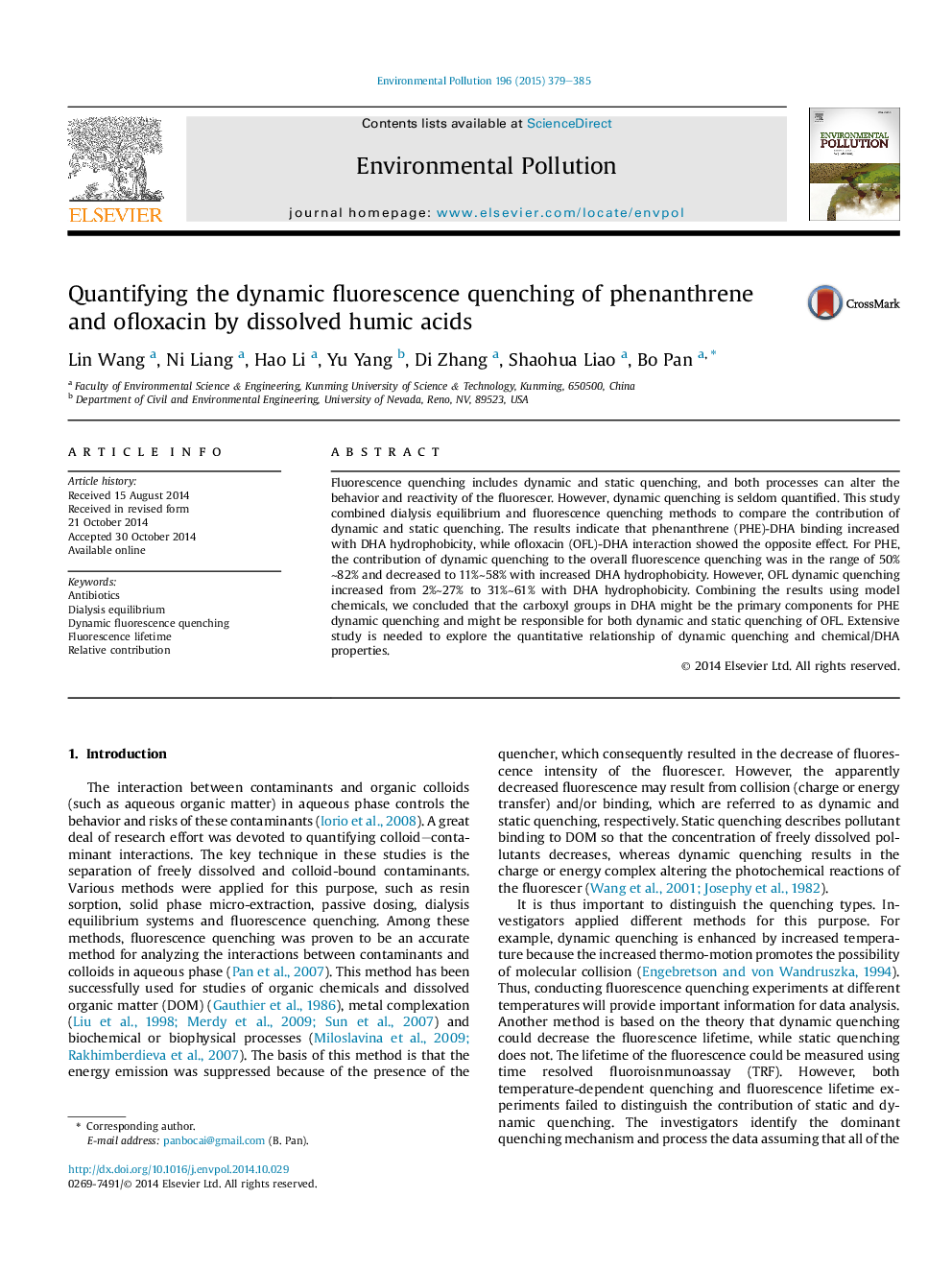| Article ID | Journal | Published Year | Pages | File Type |
|---|---|---|---|---|
| 6317976 | Environmental Pollution | 2015 | 7 Pages |
Abstract
Fluorescence quenching includes dynamic and static quenching, and both processes can alter the behavior and reactivity of the fluorescer. However, dynamic quenching is seldom quantified. This study combined dialysis equilibrium and fluorescence quenching methods to compare the contribution of dynamic and static quenching. The results indicate that phenanthrene (PHE)-DHA binding increased with DHA hydrophobicity, while ofloxacin (OFL)-DHA interaction showed the opposite effect. For PHE, the contribution of dynamic quenching to the overall fluorescence quenching was in the range of 50%â¼82% and decreased to 11%â¼58% with increased DHA hydrophobicity. However, OFL dynamic quenching increased from 2%â¼27% to 31%â¼61% with DHA hydrophobicity. Combining the results using model chemicals, we concluded that the carboxyl groups in DHA might be the primary components for PHE dynamic quenching and might be responsible for both dynamic and static quenching of OFL. Extensive study is needed to explore the quantitative relationship of dynamic quenching and chemical/DHA properties.
Related Topics
Life Sciences
Environmental Science
Environmental Chemistry
Authors
Lin Wang, Ni Liang, Hao Li, Yu Yang, Di Zhang, Shaohua Liao, Bo Pan,
